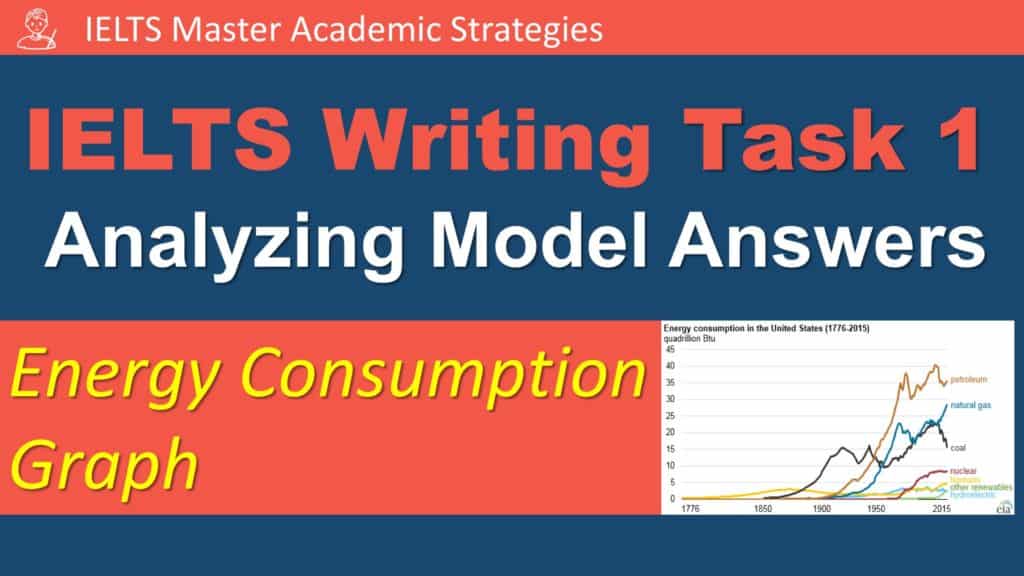In this video lesson, we analyze an IELTS Writing Task 1 model answer from Cambridge IELTS 9 and shows why it is truly a “model answer”. We go through the Task Response, Cohesion and Coherence, Vocabulary, and Grammar parts to highlight some of the best writing you can find.
IELTS Writing Task 1 Model Answer (Cambridge IELTS 9 pg. 168)
Consumption of energy derived from natural gas and coal is similar over the period. From 20q and 15q respectively in 1980, gas showed an initial fall and coal a gradual increase, with the two fuels equal between 1985 and 1990. Consumption has fluctuated since 1990 but both now provide 24q. Coal is predicted to increase steadily to 31q in 2030, whereas after 2014, gas will remain stable at 25q.
Looking at this writing sample, there are a few things that we can see:
- There are comparisons in almost every sentence. This is good IELTS Task 1 writing.
- High-level cohesive techniques like using “respectively” and “the two fuels” are included.
- There is a variety of vocabulary that is used to express the changes in data. IELTS Writing Task 1 vocabulary like “initial fall”, “gradual increase”, “increase steadily to”, etc. are all part of the vocabulary that make this sample answer score highly.
- Tense changes that are appropriate for describing different data are present. Also, there is a variety of simple and complex sentences.
What can we learn from this IELTS Writing Task 1 Model Answer analysis?
We can learn a lot. Most of it is commonly repeated advice if you’ve been studying IELTS for a while:
- Make a lot of relevant comparisons.
- Connect your ideas with cohesive devices and related vocabulary.
- Memorize common vocabulary for describing change. This particular sample answer uses a line graph so this kind of IELTS Writing Task 1 vocabulary is necessary.
- Understand how to use present, future, present perfect, and other tenses to accurately describe time changes.
Your Action Step
Learning how to analyze IELTS Writing Task 1 questions is good, but this is a different kind of analysis. Here’s your next step.
Find a passage from an IELTS Writing Task 1 model answer and analyze it in a similar way to the video lesson above. Don’t just do this for line graphs. Do it for tables, maps, bar charts, and any other type of Writing Task 1 sample that you can find. The more of this analysis you do, the better off you’ll be.
